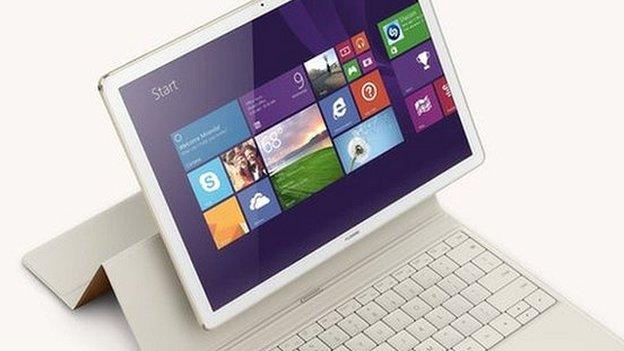MWC 2016: Sony Xperia puts AI assistant in owner's ear
- Published
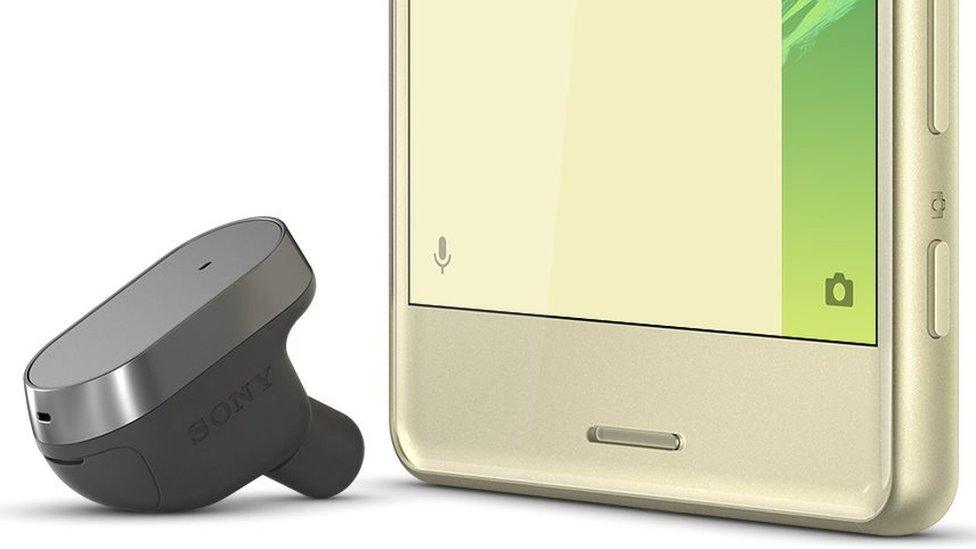
The Xperia Ear allows the owner to control their phone and receive notifications without touching their phone
Sony has announced an earpiece that puts a virtual assistant in one of its owner's ears.
It brings smartphone technology closer to the artificial intelligence experience depicted in the movie Her.
However, Sony will need to overcome the public's resistance to wearing Bluetooth headsets.
The Japanese company also unveiled smartphones that it says are the first to have technology that extends the lifespan of handset batteries.
It announced the new devices on the first day of the Mobile World Congress technology show in Barcelona.

The movie Her is about a man who falls in love with his smart device's operating system
Sony ranks outside the world's top 10 bestselling smartphone brands. It suffered a 27% fall in its smartphone shipments last year, according to market research firm IDC.
The manufacturer is not trying to increase sales by cutting prices in a bid to stop its mobile division losing money, external.
However, some analysts have questioned whether that approach makes sense.
Voice controls
Sony said the Xperia Ear was part of a plan to extend the Xperia brand beyond tablets and phones.
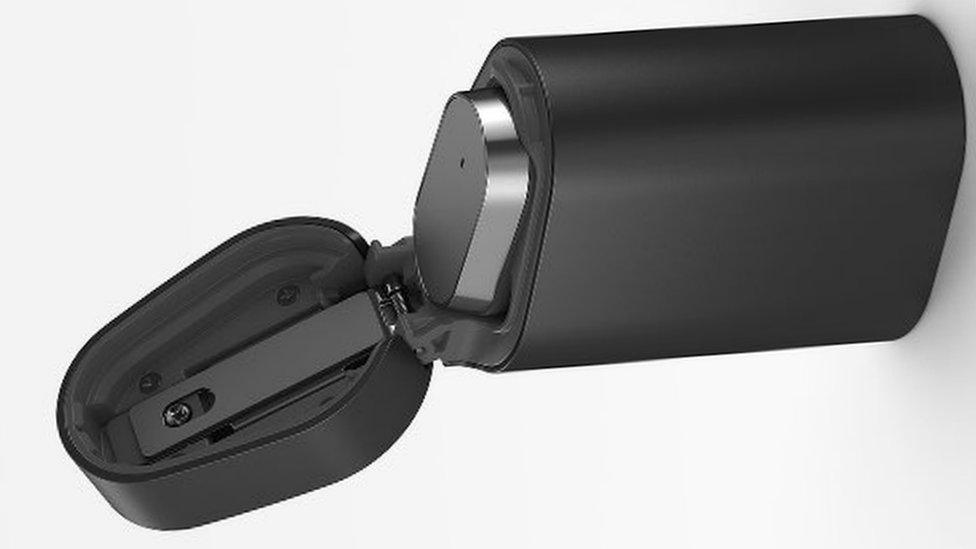
The headset can be placed in an optional case that recharges its battery on the go
The device features a proximity sensor that informs a wirelessly linked Android smartphone when it is in the user's ear.
An app on the phone then provides location and time-based prompts about the weather, diary appointments, social media posts, missed calls and the news.
It can also respond to voice commands for internet searches, navigation directions and message dictations.
The idea is to free users from having to handle their phone so often.
Its battery life is limited to three-and-a-half hours of active use, but Sony suggests this will be enough for most people most days.
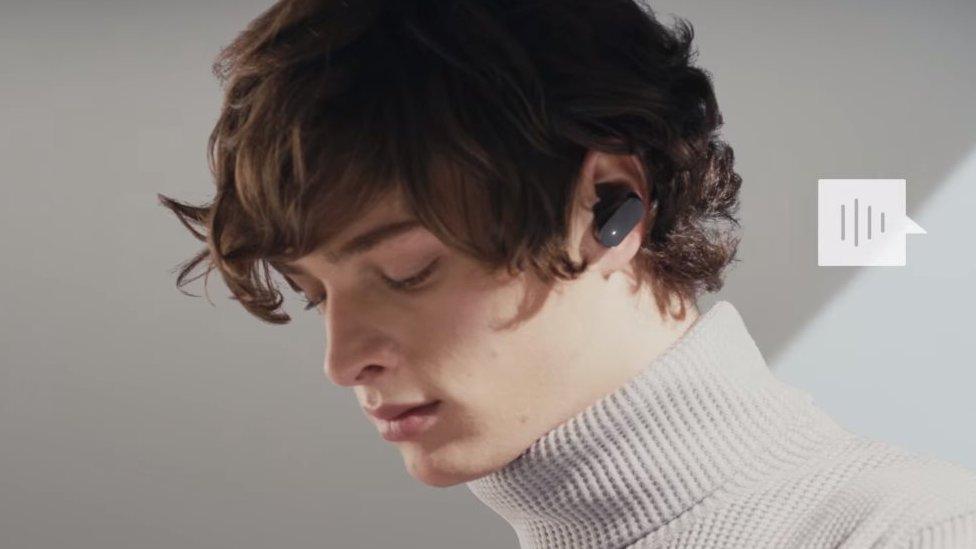
Sony said the Xperia Ear would go on sale "in the summer"
Other firms, however, have struggled to popularise the concept.
Motorola launched the Moto Hint Bluetooth earbud last year, which provides a more limited range of voice-based controls. It remains a niche product.
One expert said Sony's device seemed a more "interesting attempt" to free up people's hands and eyes, but added there were still challenges to overcome.
"To be attractive to large numbers of users the voice processing will need to be excellent and it will need to work with a wide range of apps and functions on the phone," said Martin Garner from the CCS Insight consultancy.
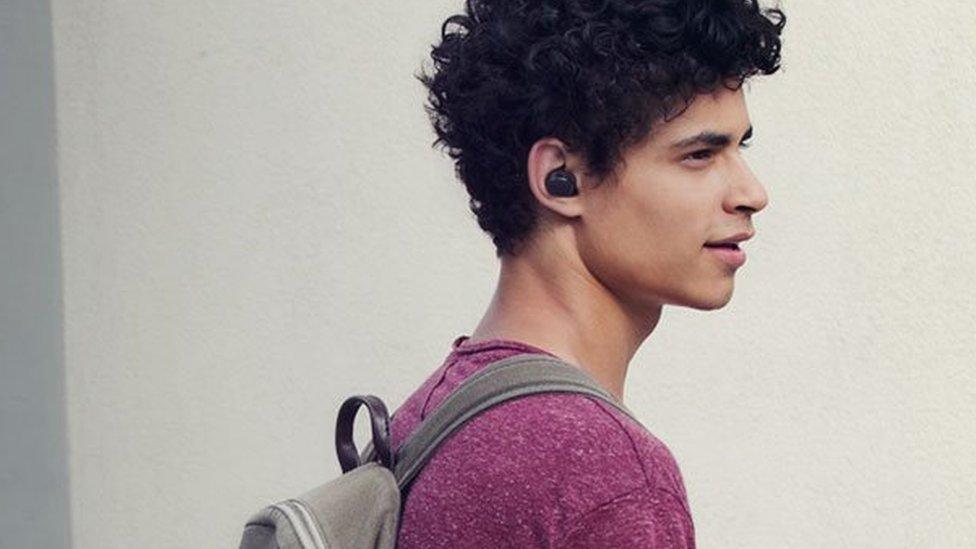
Motorola previously sought to reinvent the Bluetooth headset with its Moto Hint
However, Ian Fogg of IHS Technology was more sceptical.
"Android smartphones already have the Google Now service, so what Sony has to do is work out how it can do something different via voice control," he said.
"Then it has to make sure that it complements Google's software. It's similar to the challenge that all Android handset have when they make their own email, browser and camera apps - it results in there being more than one way of doing the same thing on a device and that can confuse consumers."
New smartphones
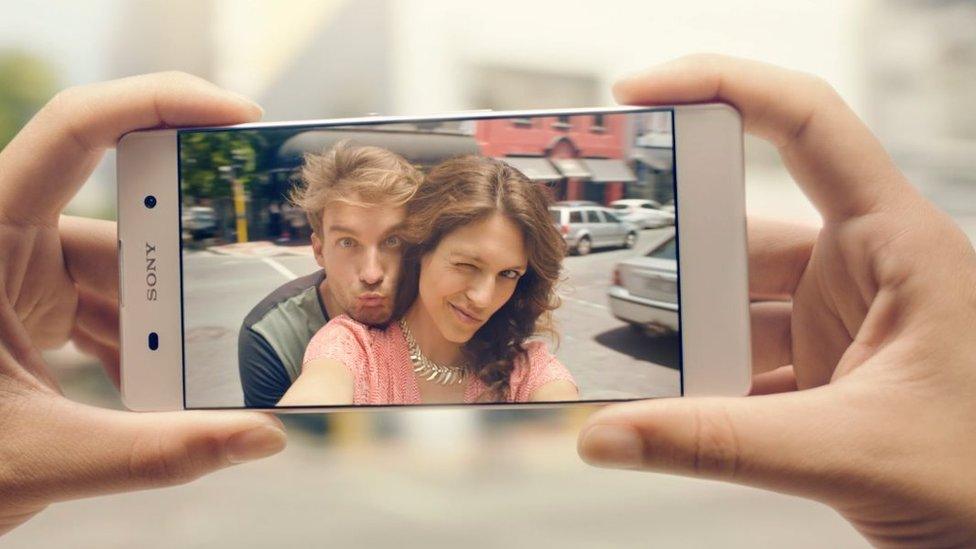
The lowest-end phone is the only one to have an edge-to-edge bezel-less screen, but it comes at the cost of only being 720p resolution rather than 1080p
The company also announced three smartphones as part of its new Xperia X series, which feature different types of processors and display resolutions depending on their price.
All have adopted a new battery technology developed by Qnovo, a Silicon Valley-based start-up.
"It scans the condition of the battery - sees its temperature and the condition of usage - to see its health level, and then optimises the charging to not damage the battery," a Sony spokesman said.
That meant the batteries should last twice as long before failing to retain a decent charge, he added.
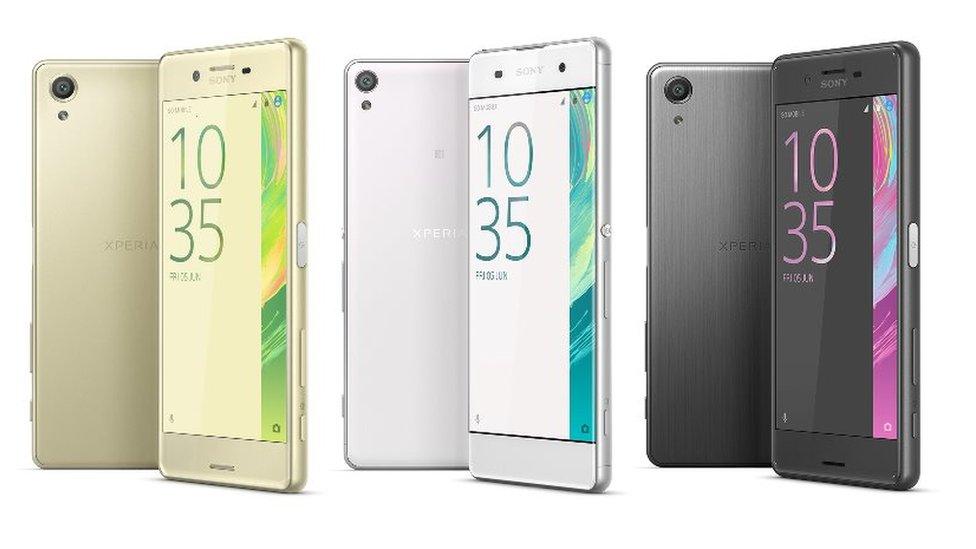
Sony has yet to reveal the price of its new Xperia X handsets
This should appeal to the growing numbers of consumers who go two years or more between upgrades, Sony said.
Another new feature is a technology dubbed "4D focus", which the company says allows the new handsets' cameras to lock onto objects twice as quickly as its Z5 phones.
However, Mr Garner was unimpressed.
"There's been a feeling that unless Sony can come up with a truly innovative, stand-out smartphone, there would be serious question marks around the future of the company's mobile business," he said. "In our view, the new smartphones do not break significant new ground."
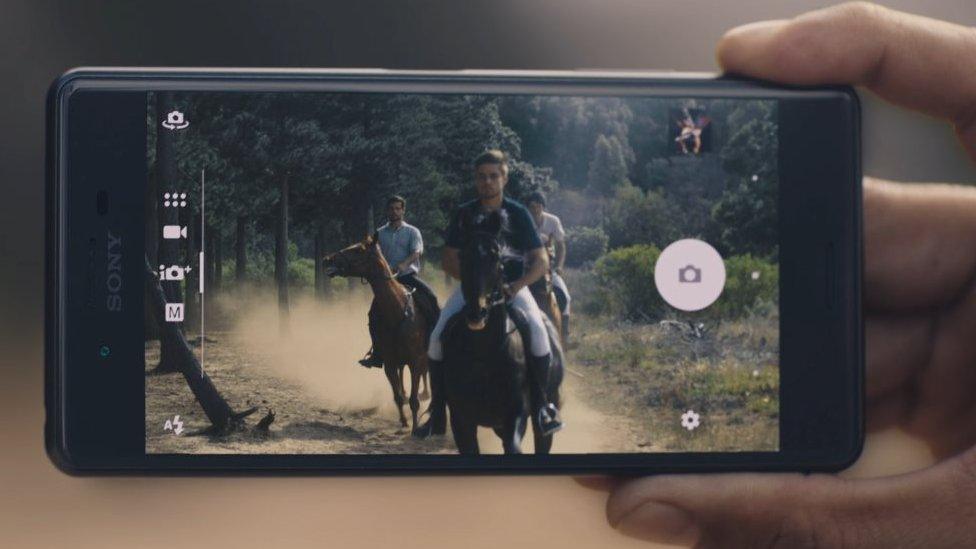
Sony has used an autofocus technology originally developed for its high-end Alpha cameras
Profits versus volume
A year ago, Sony's chief executive Kazuo Hirai told the BBC that there was "no guarantee" it would still be in the smartphone business by 2020 if its mobile division continued to make losses.
Last quarter, the unit reported a 24.1bn yen ($214m; £150m) profit despite shipping 36% fewer handsets than during the same three months a year before.
The company said moving to a line-up from which it made more money per device was behind the profit.
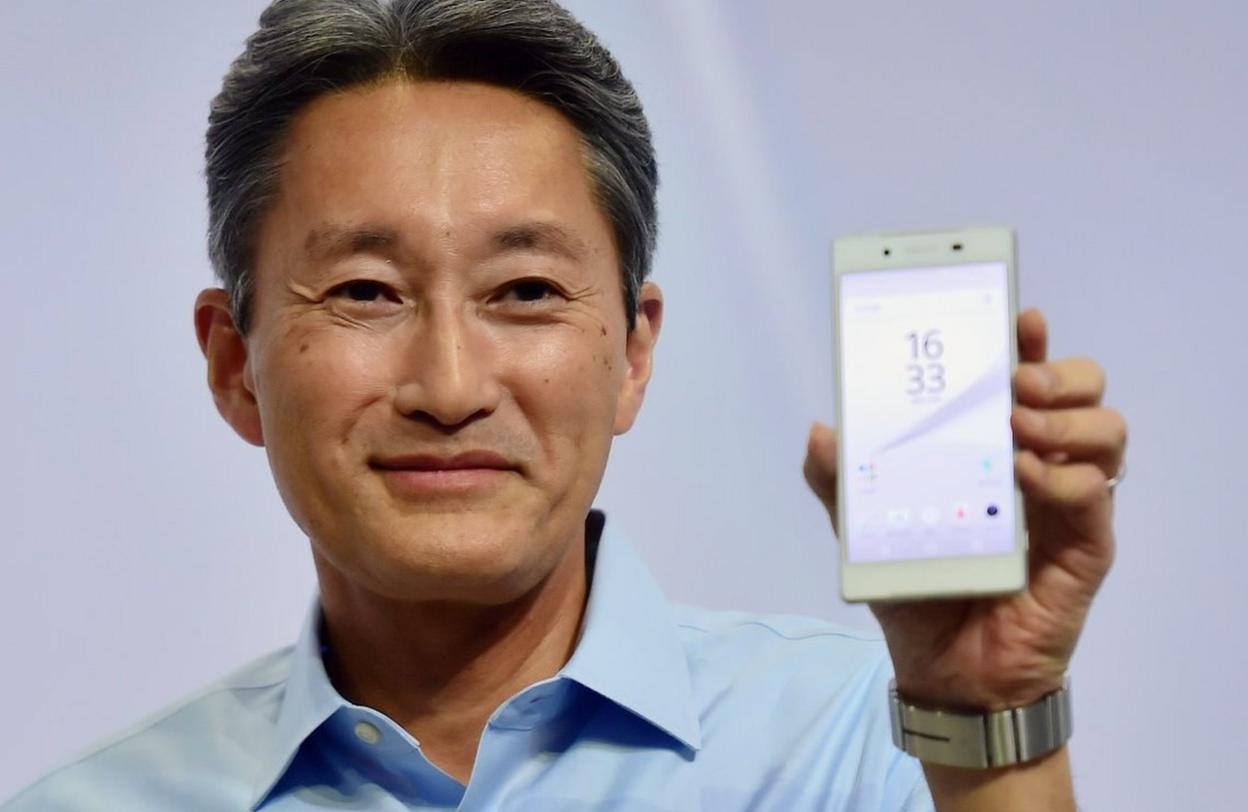
Sony said its smartphone division returned to profit in its last financial quarter
But Mr Fogg said he was unsure whether the approach was sustainable.
"We predict that shipments will continue to fall in 2016 and 2017," the analyst said. "Smartphones are a scale business - it's normally easier to be profitable if you sell high volumes. So, the question is whether Sony can stay profitable if its sales fall further."
- Published21 February 2016
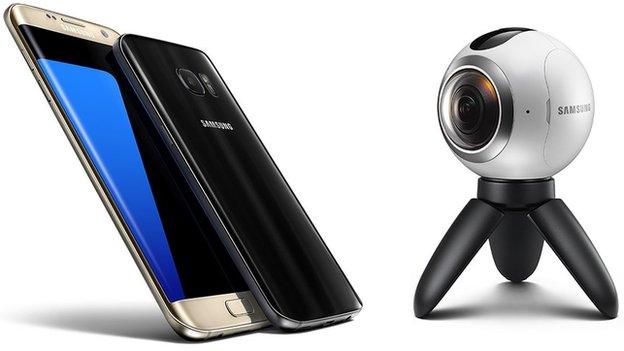
- Published21 February 2016
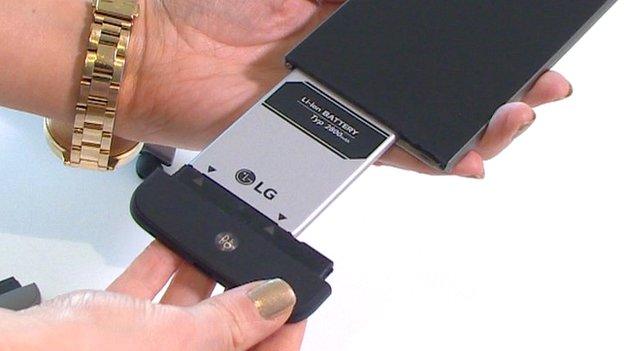
- Published21 February 2016
